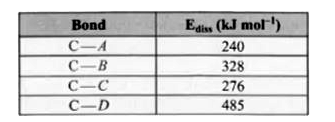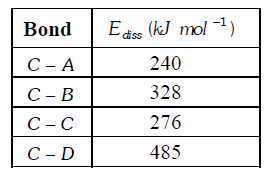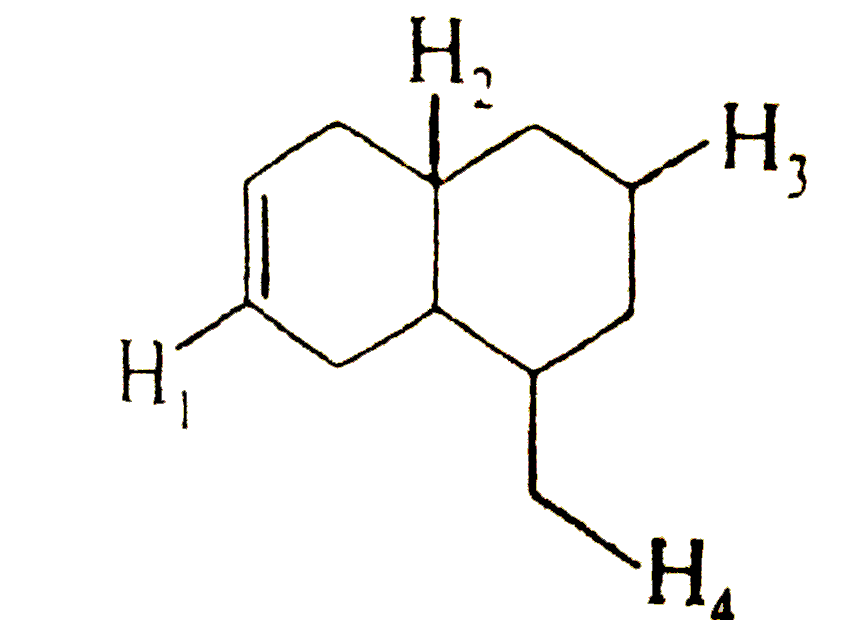The table given below lists the bond dissociation energy for single covalent bonds formed between C and atoms A, B, D, E.
Which of the atoms has smallest size ?
A
A
B
B
C
C
D
E
Video Solution
Text Solution
The correct Answer is:D
bond has highest bond energy, it means that the covalent C-E will be strong. Smaller is the size of atom, stronger is the covalent bond.
|
Updated on:21/07/2023
Topper's Solved these Questions
- BOOK - OP TANDONCHAPTER - Chemical Thermodynamics and ThermochemistryEXERCISE - Objective Question Level B Set II8videos
Chemical Thermodynamics and Thermochemistry
- BOOK - OP TANDONCHAPTER - Chemical Thermodynamics and ThermochemistryEXERCISE - Assertion Reason Type Question29videos
Chemical Thermodynamics and Thermochemistry
- BOOK - OP TANDONCHAPTER - Chemical Thermodynamics and ThermochemistryEXERCISE - Set 218videos
Chemical Thermodynamics and Thermochemistry
- BOOK - OP TANDONCHAPTER - CHEMICAL KINETICSEXERCISE - LINKED COMPRESHENSION TYPE QUESTIONS ( SECTION-VI)4videos
CHEMICAL KINETICS
- BOOK - OP TANDONCHAPTER - CLASSIFICATION AND NOMENCLATURE OF ORGANIC COMPOUNDS EXERCISE - INTEGER2videos
CLASSIFICATION AND NOMENCLATURE OF ORGANIC COMPOUNDS
Similar Questions
Knowledge Check
- Question 1 - Select One
The table given below lists the bound dissociation enegrgy (Ediss) for single covelent bonds formed between C and atom A,B,D,E.

What of the atoms has smallest size?ADBECADB - Question 2 - Select One
The table shown below gives the bond dissociation energies (Ediss) for single covalent bonds of carbon (C) atoms with element A, B, C and D. Which element has the smallest atoms?
 ACBDCADB
ACBDCADB - Question 3 - Select One
The table shown below gives the bond dissociation energies (Ediss) for single covalent bonds of carbon (C ) atom with element A,B,c and D. Which element out of these has the smallest atoms ?
 AABBCCDD
AABBCCDD
Which mentioned bond has highest C−H bond dissociation energy.
 View Solution
View SolutionWhich of the following C-H bond has the lowest bond dissociation energy
View SolutionThe bond energy (in kcal mol−1) of a C−c single bond is approximately
View SolutionThe bond energy (in kcal mol−1) of a C−c single bond is approximately
View SolutionThe bond energy (in Kcal mol−) of a C-C single bond is approximately:
View Solution


